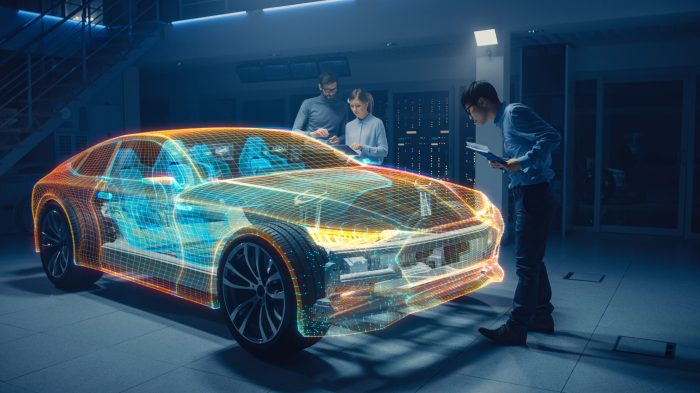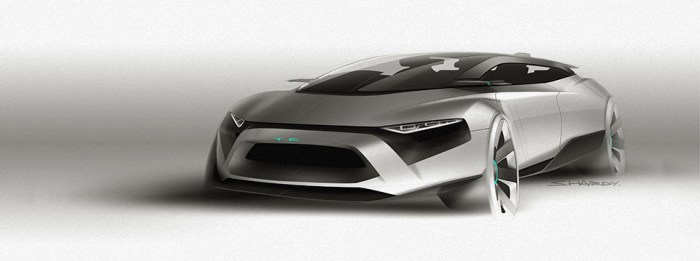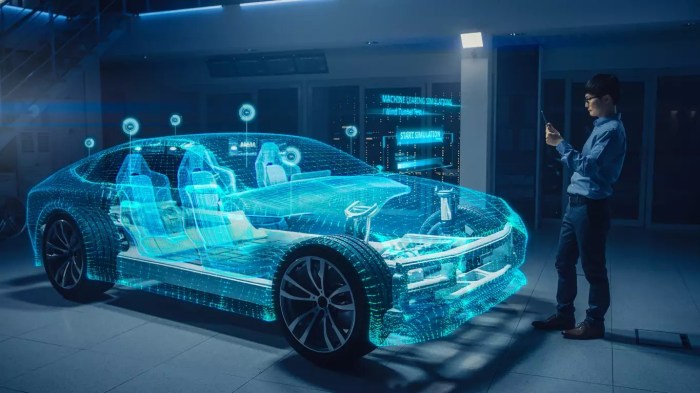Latest trends in automotive design and engineering pave the way for cutting-edge innovations that are reshaping the future of vehicles. From electric cars to AI integration, the industry is undergoing a transformative evolution that promises exciting developments ahead.
Explore the advancements that are propelling automotive design and engineering into a new era of sustainability, efficiency, and technological sophistication.
Latest trends in automotive design

Electric vehicles are becoming increasingly popular in automotive design as the industry makes a significant shift towards sustainability and reducing carbon emissions. These vehicles are powered by electric motors instead of traditional internal combustion engines, leading to a cleaner and more environmentally friendly mode of transportation.
Shift towards Electric Vehicles, Latest trends in automotive design and engineering
- Electric vehicles offer zero tailpipe emissions, reducing air pollution and greenhouse gas emissions.
- Automakers are investing heavily in the development of electric vehicle technology to meet growing consumer demand for eco-friendly transportation options.
- Advancements in battery technology have extended the range of electric vehicles, making them more practical for everyday use.
Integration of Autonomous Driving Features
- Modern car designs are incorporating autonomous driving features such as lane-keeping assistance, adaptive cruise control, and automatic emergency braking to enhance safety and convenience.
- Autonomous vehicles have the potential to reduce accidents caused by human error and improve traffic flow, leading to a more efficient transportation system.
- Automakers are working on developing fully autonomous vehicles that can operate without human intervention, revolutionizing the way we travel.
Use of Sustainable Materials and Eco-Friendly Design Practices
- The automotive industry is embracing sustainable materials such as recycled plastics, bio-based composites, and natural fibers to reduce the environmental impact of vehicle production.
- Eco-friendly design practices focus on reducing waste, energy consumption, and water usage throughout the manufacturing process, promoting a more sustainable approach to building vehicles.
- By incorporating sustainable materials and design practices, automakers are working towards creating vehicles that are not only efficient and safe but also environmentally responsible.
Advancements in automotive engineering

Artificial intelligence and machine learning have revolutionized the automotive industry by optimizing vehicle performance like never before. These technologies are used to analyze massive amounts of data in real-time, allowing for constant adjustments and improvements in various aspects of vehicle operation.
Use of artificial intelligence and machine learning
- AI algorithms can predict maintenance needs based on driving patterns and vehicle usage, reducing breakdowns and increasing overall reliability.
- Machine learning is utilized in autonomous driving systems to continuously learn from different scenarios on the road, improving safety and efficiency.
- Automakers are leveraging AI to enhance driver assistance features, making vehicles more intuitive and responsive to the driver’s needs.
Advancements in aerodynamics
- Modern vehicles are designed with advanced aerodynamics to reduce drag and improve fuel efficiency, ultimately decreasing emissions and operating costs.
- Engineers use wind tunnels and computational fluid dynamics to refine vehicle shapes and optimize airflow, enhancing performance and stability on the road.
- Aerodynamic advancements play a crucial role in electric vehicle range, as reducing air resistance allows for longer driving distances on a single charge.
Incorporation of augmented reality
- Augmented reality is being integrated into vehicle engineering to provide drivers with real-time information on navigation, vehicle status, and surroundings, enhancing the overall driving experience.
- AR systems can overlay road signs, navigation instructions, and hazard alerts directly onto the driver’s field of view, improving safety and reducing distractions.
- Automakers are exploring the use of AR for maintenance and repair tasks, guiding technicians through complex procedures with interactive instructions and visual aids.
Innovative technologies shaping automotive design

In today’s automotive industry, innovative technologies play a crucial role in shaping the design and functionality of vehicles. From 3D printing to connected car technologies, advancements are revolutionizing the driving experience and pushing the boundaries of automotive design aesthetics.
Role of 3D Printing in Automotive Design
3D printing has transformed the way prototypes are developed and parts are manufactured for vehicles. This technology allows for rapid prototyping, enabling designers to quickly iterate and test new ideas. Additionally, 3D printing has made it possible to create complex and intricate parts that were previously impossible with traditional manufacturing methods. The automotive industry has embraced 3D printing for its cost-effectiveness, flexibility, and ability to produce lightweight yet durable components.
Connected Car Technologies
Connected car technologies are reshaping the driving experience by integrating vehicles with advanced communication systems. These technologies enable vehicles to communicate with each other, with infrastructure, and with external devices, enhancing safety, efficiency, and convenience on the road. Features such as real-time traffic updates, remote vehicle monitoring, and autonomous driving capabilities are all made possible by connected car technologies. As vehicles become more interconnected, the driving experience is becoming smarter, safer, and more personalized.
Impact of Advanced Lighting Technologies
Advanced lighting technologies, such as LED and OLED, are transforming automotive design aesthetics by offering innovative lighting solutions. LED lights are energy-efficient, bright, and long-lasting, allowing designers to create dynamic lighting patterns and signatures. OLED technology, on the other hand, enables thin, flexible, and customizable lighting designs that can be integrated seamlessly into vehicle interiors and exteriors. These advanced lighting technologies not only enhance visibility and safety on the road but also contribute to the overall look and feel of modern vehicles.
Evolution of interior design in vehicles: Latest Trends In Automotive Design And Engineering
The interior design of vehicles has undergone a significant evolution in recent years, with a shift towards minimalist and futuristic designs that prioritize both aesthetics and functionality.
Trend towards minimalist and futuristic interior designs
In modern cars, we are seeing a move away from cluttered and busy interiors towards clean, sleek designs that create a sense of space and luxury. This trend is driven by the desire for a more modern and sophisticated look, as well as the need to accommodate advanced technologies seamlessly within the cabin.
Integration of smart technologies and infotainment systems
Vehicle interiors are now being equipped with a range of smart technologies and infotainment systems that enhance the driving experience. From touchscreens and voice controls to advanced navigation systems and connectivity features, these technologies are becoming standard in modern cars, providing drivers and passengers with a more enjoyable and convenient journey.
Importance of ergonomics and comfort
Ergonomics and comfort are crucial aspects of interior design in vehicles, as they directly impact the driving experience. Manufacturers are paying more attention to the layout of controls, seating positions, and overall cabin ergonomics to ensure that drivers can operate the vehicle comfortably and safely for long periods. Additionally, the use of premium materials, adjustable seating options, and advanced climate control systems contribute to a more luxurious and comfortable driving environment.
Last Word
As we delve into the latest trends in automotive design and engineering, it becomes evident that the industry is at a pivotal moment of change and progress. The innovations discussed are not just trends but a glimpse into the future of transportation and mobility.
When it comes to establishing a reliable and efficient energy distribution system, one must consider the importance of smart grid communication protocols. These protocols play a crucial role in ensuring seamless communication between various components of the grid, ultimately leading to improved performance and better energy management.
On the other hand, the development of electric vehicle charging infrastructure is essential in supporting the widespread adoption of electric vehicles. By investing in a robust charging infrastructure, we can address range anxiety and encourage more people to make the switch to electric vehicles, ultimately reducing our carbon footprint and dependence on fossil fuels.